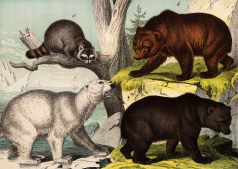The Impact of Global Warming on Animal Migration Patterns Explained
As global temperatures continue to rise, the effects of climate change become increasingly evident across the globe. One significant impact is observed in animal migration patterns. Understanding how these changes occur can help us appreciate the broader implications for ecosystems and biodiversity.
What Are Animal Migration Patterns?
Animal migration patterns refer to the seasonal movements of animals from one region to another, often driven by changes in temperature, food availability, and breeding cycles. These migrations are crucial for many species as they ensure access to resources necessary for survival and reproduction. Birds, mammals, fish, and even insects undertake migratory journeys that can span thousands of miles.

How Climate Change Disrupts Migration
Climate change disrupts migration patterns primarily through alterations in temperature and weather conditions. Warmer temperatures may cause animals to migrate earlier or later than usual due to shifts in food availability or habitat conditions. For instance, if spring arrives sooner because of higher temperatures, birds may begin their migration earlier than they have historically done.
Case Studies: Species Affected by Climate Change
Several species have been documented as significantly affected by climate change-induced shifts in their migratory behaviors. For example, the Arctic tern has seen changes in its migratory route due to melting ice caps affecting its feeding grounds. Similarly, monarch butterflies have altered their pathways due to temperature fluctuations that impact their breeding sites along migratory corridors.
Consequences for Ecosystems
Changes in animal migration can lead to cascading effects within ecosystems. For example, if a predator migrates too early or late compared to its prey’s lifecycle, it could lead to population imbalances that affect local biodiversity. Successful reproduction rates may decline if animals cannot find suitable habitats upon arrival at their destinations.
What Can We Do?
While climate change poses significant challenges for animal migration patterns, there are actions we can take individually and collectively. Supporting conservation efforts aimed at protecting habitats critical for wildlife can help mitigate some impacts of climate change on these species. Additionally, advocating for policies that address carbon emissions is vital in combating global warming’s widespread effects on our planet.
In conclusion, understanding the impact of global warming on animal migration patterns underscores the urgency of addressing climate change as a global community. By recognizing these shifts and taking action toward sustainability efforts today, we can help preserve our planet’s rich biodiversity for future generations.
This text was generated using a large language model, and select text has been reviewed and moderated for purposes such as readability.


